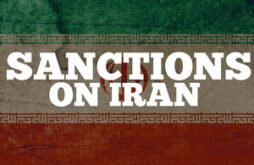Al-Monitor – On the sidelines of the UN General Assembly in New York, European Union foreign policy chief Federica Mogherini announced that the European bloc would create a “special purpose vehicle” (SPV) to sustain Iran-EU trade despite the reimposition of US secondary sanctions. While details are being worked out, the SPV will act as a new payment mechanism between the two sides and will probably mainly rely on a bartering system with a minimum flow of funds. According to Mogherini, the SPV will aim to “assist and reassure economic operators pursuing legitimate business with Iran.”
But what is the feasibility of this plan, and what does it mean for Iranian and European companies?
Of note, there will potentially be a number of SPVs that will be designated for business with Iran. Nonetheless, for the sake of simplicity, this analysis will refer solely to one SPV to outline the feasibility of this approach. The multiplicity of SPVs will also make the application of sanctions more challenging, which would serve the ultimate purpose of this structure.
As was argued in Al-Monitor in May, it was clear from the outset that the continuation of the Joint Comprehensive Plan of Action (JCPOA) absent the United States would depend on the cooperation of European small- and medium-sized enterprises (SMEs) with Iran. So the question is whether the proposed SPV can facilitate that process and protect European banks and companies from the risk of future US sanctions, considering that Washington could expand its measures to target the SPV mechanism and thus undermine the venture’s future operations.
First and foremost, indications are that the SPV will be a legal entity potentially owned by participating European governments to act as an intermediary between Iran and the EU. Acknowledging that the United States will have the highest leverage over financial, and especially dollar-based, transactions, the SPV seems to be designed to devise a structure that will minimize the financial flows through a triangular barter structure. In practice, the SPV would act as a financial and commercial intermediary for exports and imports between the EU and Iran and will be open to other nations that are trading with Iran. The fact that non-EU trading partners will also be allowed to utilize the SPV expands the range of possibilities for triangular flow. An example could be the following scenario: Iran exports petrochemicals to country A, the proceeds of which will be paid to the SPV that will keep the funds in escrow. Then, Iran imports equipment from a European supplier and settles the bill through the SPV. As such, the SPV would not have to engage in financial transactions on all imports and exports, but will rather settle the balance on a regular basis — exactly like an escrow agent. Assuming that the SPV would be connected to one or more European central banks, it would not have to use the SWIFT service that was used in the period between 2012 and 2016 to stifle the transactions between Iran and the global financial system. Needless to say, none of the financial transactions will be dollar-based.
If the above assumptions are correct, the SPV will be the main European entity that is in direct financial interaction with Iranian entities and banks, and it can be expected that the United States would then try to target all legal entities that are trading with the SPV. Therefore, at the end of the day, the feasibility of this plan will fully depend on the extent to which EU governments and institutions are prepared to go to counter likely US sanctions. In other words, the key challenge will be to protect the SPV as well as all those European companies and banks that will directly trade with Iran via the mechanism. This may happen through legal action against US interests in the EU or through international institutions such as the World Trade Organization, but it will be important that the EU has a comprehensive contingency plan to counter future US measures.
The next question is how Iran and other stakeholders — especially Tehran’s non-EU trading partners, will react to the proposed mechanism. Iranian officials have praised the EU for their political commitment and also for the courage to take a significant step to sustain trade between the two sides. However, while the SPV has the potential to sustain trade, the key issue for Iran will be investment and transfer of technology. Consequently, other steps will be needed from both sides to facilitate the transfer of technology and actual investments as opposed to pure trade. It is also important to the Iranian side that the SPV mechanism is not understood as an “oil-for-food” program — a notion that would work against Iran’s sense of dignity. As such, the SPV will have to be seen as a vehicle for protecting and hence facilitating business between Iran and the EU.
There is no doubt that European SMEs have the potential to offer Iran the needed technologies, particularly in fields such as energy efficiency, water management, environmental issues and industrial development. The bottleneck here will be the process of creating successful joint ventures between European SMEs and Iran’s private sector. As such, the SPV could also act as a facilitator in preparing European SMEs for joint ventures and the needed legal, technological and operational processes to assure win-win scenarios for all parties. At the same time, Iranian officials will have to improve the business climate in order to remove some of the impediments for the operation of European companies in Iran.
As far as investments in the Iranian economy are concerned, the EU and Iran have to seriously consider the establishment of various investment funds with participation from both sides in order to mobilize financial resources to invest in Iran. The European side can allocate some resources to specialized sectors while the Iranian side prepares to issue Eurobonds. Whether the SPV can facilitate this process remains to be seen.
One important group of stakeholders will be European buyers of Iranian crude oil. Assuming that all the large oil companies will avoid buying Iranian crude and condensate, the big question will be whether some European oil traders will opt to purchase Iranian oil through the SPV. Such oil traders would be more susceptible to US sanctions compared to SMEs that are less exposed to US pressure. It thus remains to be seen how the EU will fill that gap in addressing Iran’s expectations, one of which is that the EU will continue to import Iran’s oil.
For Iran’s non-EU trading partners, which will most probably start interacting with Iran in their local currencies, the SPV will be a welcome additional vehicle to trade with Iran, and in some cases — such as China and Russia — their presence could further facilitate the SPV’s actual operations.
All in all, the SPV mechanism is the starting point of a process that needs to be further consolidated in order to enable trade and investment between the two sides. The fact that the SPV could lead to the creation of new paths in managing international financial flows independent of the United States is secondary to the actual requirement to sustain trade and investment ties between Iran and the EU and hence Tehran’s motivation to remain committed to the JCPOA.
 Shabtabnews In this dark night, I have lost my way – Arise from a corner, oh you the star of guidance.
Shabtabnews In this dark night, I have lost my way – Arise from a corner, oh you the star of guidance.



